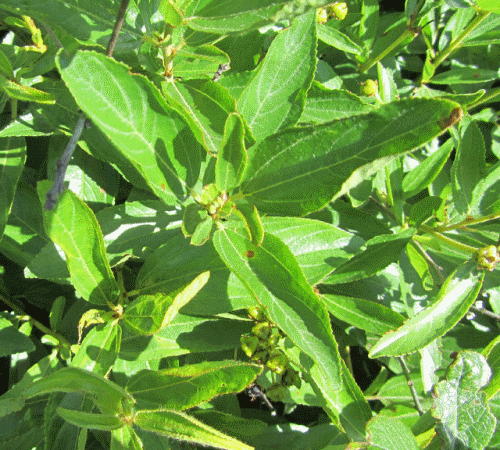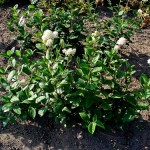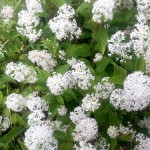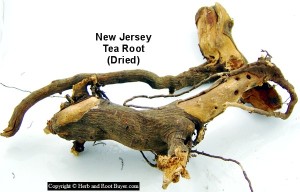New Jersey Tea Root – Ceanothus americanus
|
Current Demand = Normal |
Parts Used: Leaves & Root |
 |
 |
 |
 |
Family Name: Rhamnaceae
Common Names: New Jersey Tea, Jersey tea, mountain-sweet, red root, Walpole tea, wild snowball, bobea, Red Indian Paint, Tetterwort…
Description:
Red Root is a small, deciduous summer-flowering shrub, with small, fragrant, white flowers that grow in clusters at the end of long stalks. They bloom in May-July. The shrub can grow up to 4 feet with spreads of 3-5 feet. The plant is native to Northern America.
The leaves are toothed, broad and ovate with medium to dark green leaves and hairy grey undersides. The young twigs are yellow and stand out erect in the winter months. The fruit is dry rounded capsules with 3 lobes. At first the bark is green, then as the shrub grows and ages, the bark splits and turns brown. There are shallow fibrous root hairs near the surface and thick, bur-like, deep, woody roots that are red inside and covered with brownish or reddish bark.
Harvesting/Drying:
Parts Used: Root and leaves
When harvesting New Jersey Tea root, separate from the top at ground level. The tap root can grow quite large and should be split when fresh for aid in drying. Also wash the root thoroughly removing gravel and other foreign matter. New Jersey tea leaf should be picked from the stem when green and mature. Try and avoid leaving the plants stem attached to the leaf during harvest.
Due to the size and woody flesh of the New Jersey tea root, it is suggested that the root be chopped into chunks or split after washing. Whole root will take a very long time to dry which will make it susceptible to molding. New Jersey Tea root can be dried in the sun or indoors with heat and good airflow. Store dried roots in cardboard boxes or paper sacks until ready for sale or use. Feed sacks can also be used for storage of dried roots.
New Jersey Tea leaf should be checked making sure stems are all removed. Dry leaves indoors out of direct sunlight. Barn lofts or attics work well for drying leaves on screens or hang leaves in mesh bags being sure not to pack the leaves too tight. Airflow must be present for the leaves to dry properly. Store dried leaves in paper or cardboard out of the sun until ready for sale.
Planting/Cultivation:
Growing region: Red root or New Jersey tea root can be found in the United States from Maine to Florida, west to Oklahoma and north to Minnesota. It often can be found in dry gravel type conditions as well as open woods.
The New Jersey tea shrub prefers average, dry to medium soil that is well drained and in either full sun or part sun. The thick woody red roots go deeply into the soil and this makes it very hard to transplant. The plants dislike root disturbance, so they should be planted into their permanent positions while still small. It dislikes to be pruned and but if pruning does need to occur, do so in the spring and do not cut any wood thicker than a pencil.
Propagation by:
Seed: Seeds are soaked in warm water for 12 hours then chilled at 1 degree C for one to three months. Germination usually occurs within 1-2 months. Seeds are stored in duff in large quantities. The seed exhibits up to 15 years longevity when stored in air-tight, dry containers.
Cuttings: In July/August, make a small cutting of half-ripe wood, taken at a node. Place in a cold frame for the first winter, transplant into permanent home as soon as possible in the early spring.
Attributes (Images)
By homeredwardprice [CC BY 2.0], via Wikimedia Commons
By User:JohnOyston (Own work) [CC BY-SA 1.0], via Wikimedia Commons
By H. Zell (Own work) [GFDL or CC BY-SA 3.0], via Wikimedia Commons
 Root Buyer
Root Buyer